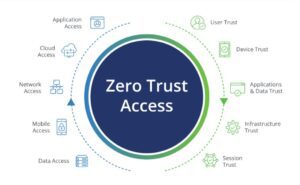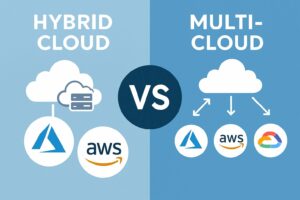Moving to the cloud can be a daunting task for companies, especially when they are unsure of what steps to take. There are many mistakes that companies make during this process, but fortunately, there are ways to avoid them. In this blog post, we will discuss some of the most common mistakes companies make when moving to the cloud and how to avoid them. By following these tips, your company can make a smooth transition to the cloud.
1. Not doing their research and not understanding what the cloud can do for them
Organizations that overlook the potential of cloud computing often lack the desired efficiency and security when it comes to critical systems and processes. Without doing proper research and understanding how the cloud can unlock opportunities to improve business operations, organizations risk inefficient workflow, increased exposure to security threats, and generally poor performance across the organization. Organizations that invest in the time to learn about what cloud-based tools and technologies can do for them can achieve significant cost savings and improved scalability for their business. Investing in learning about what the cloud can do is integral for modern businesses who want to stay competitive.
2. Not having a plan or strategy for how they’re going to use the cloud
Failing to plan ahead is an unwise approach to cloud computing, with important decisions and meaningful outcomes at stake. Without a clear strategy or roadmap in place, executing a consistent cloud strategy becomes far more challenging. By having a plan, organizations can reduce costs, as they will have the ability to optimize their consumption of resources by aligning it with their business objectives. Additionally, having a well-defined plan allows organizations to understand what type of cloud computing solution makes sense currently, and strategically position themselves for the future. In short, not having a plan for using the cloud is like driving without a map – you may get somewhere eventually but you’re likely not going to take the most cost-effective route.
3. Trying to do too much at once and not taking advantage of the flexibility of the cloud
In today’s increasingly connected world, everyone from businesses to individuals is looking to take advantage of the flexibility offered by the cloud. However, many simply try to do too much at once and end up overburdening their systems or falling off course. It’s important to consider the full scope of projects you’re taking on and prioritize them according to your goals. The cloud can be a powerful resource if its capabilities are leveraged strategically, but making use of it requires proper planning and understanding of what you’re trying to accomplish. By ensuring that you don’t take on more than can be handled, and utilizing the features available in the cloud, you’ll be challenging yourself while avoiding overwhelming yourself with unnecessary tasks.
4. Not monitoring their usage and spending too much money on unnecessary services
Without proper cloud spend monitoring, businesses might find themselves wasting money on cloud services that aren’t necessary for their architecture and plan. It’s essential for any company to keep track of what cloud resources they’re using, otherwise their cloud costs can quickly spiral out of control. Monitoring cloud usage is a great way to cut down on wasted cloud spend, allowing businesses to see where cost savings can be made and ensuring they’re only paying for the services they actually use.
5. Not being prepared for outages or disruptions in service
Every cloud platform is vulnerable to outages and disruptions in service, yet many businesses continue to use them without having an adequate contingency plan in place. Failing to have a proactive strategy for addressing outages or potential disruptions can cost time, money and clients. Fortunately, cloud service providers often offer a broad range of managed services; these services should be leveraged when developing an effective preparedness plan for your organization. The cloud provider should also be able to provide offer advice on the areas most likely to cause disruption and help you establish processes for monitoring and responding quickly in the event of unforeseen issues. Without question, if you are going to use cloud platforms it pays off to be well prepared when outages or disruptions occur.
If you’re not careful, it’s easy to make mistakes when moving to the cloud. Not doing your research, not having a plan, and trying to do too much at once are all common mistakes that can lead to problems down the road. Make sure you take advantage of the flexibility of the cloud and monitor your usage closely to avoid overspending. And finally, be prepared for outages and disruptions in service. They’re bound to happen at some point. Have you made any of these mistakes? If so, how did you rectify them? Or have you been able to avoid them altogether? Let us know in the comments below.



